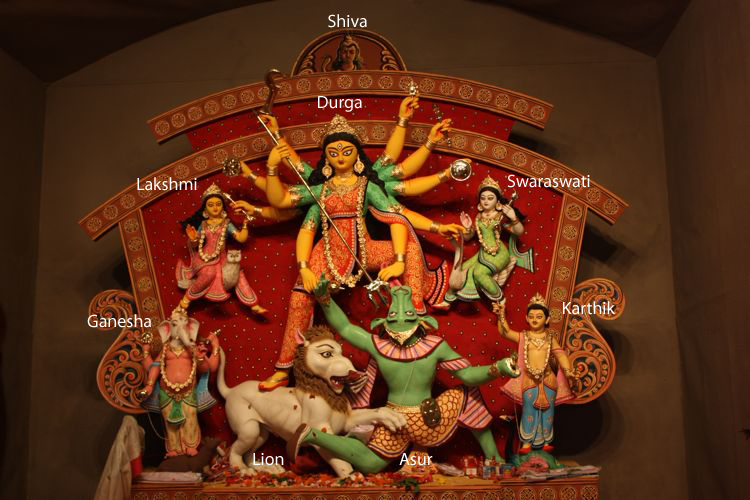In Kolkata, the Pujo is marked by each neighborhood or area building a pandal. Traditionally, pandals are structures to house the idols and protect them from the elements during the Pujo, but they've evolved into something entirely different. Nowadays, pandals range from small, roadside pujos, to enormous structures built to resemble castles, temples, and more. Each of these large pandals typically has a theme, although the theme can be nebulous. All of them are temporary structures, usually built over the course of a month or so, and then torn down after the pujo.

Inside the big pandals, there are often artworks, lighting, and wide open spaces, all designed to draw people into the pandal and enjoy the pujo. The idol itself (see above for an example idol taken near EDF) represents six gods: Shiva, Ganesha, Karthik, Lakshmi, Swaraswati, and of course, Durga. Most of the idols depict Durga defeating the demon king, Asur. Each of these gods have a traditional depiction, such as Durga wielding ten weapons and riding a lion, killing Asur with a trident. Ganesha is depicted with a pet mouse, and Karthik with a pet peacock. Swaraswati is depicted with a pet swan and Lakshmi with a pet owl. Asur is sometimes depicted as a demon, and at other times with the head of a bull.
A big tradition in Kolkata is what is known as Pandal hopping, where families will visit dozens of the biggest pandals in the city. We visited well over twenty during the five days of the Durga Pujo, and visited a handful of others that we couldn't even get into due to the line. In later writeups, I'll write about the specific pandals we visited, and a little about each of them.
No comments:
Post a Comment